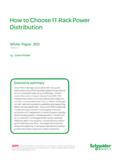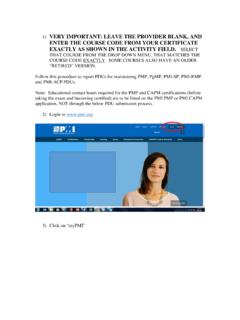Transcription of 500 Thoreau Street Handy benchmarks to help you …
1 2009-2010 New Leaf Project Management EV benchmarks for Re-baselining (Earn pdus for reading this article.) 1 You may not post the PDF to a web page. You may, however, link to its source: 500 Thoreau Street Concord, MA 01742 USA + ($ for 4 pdus ; $ for 6 pdus ) Earned-Value benchmarks for Re-baselining Your Project Handy benchmarks to help you re-baseline a project John M. Nevison, PMP Introduction When you re-plan a project, you must integrate many concerns: the lessons learned from the project to date, changes in scope, evolving stakeholder needs and expectations, schedule demands, staffing conflicts, and even changes in the underlying technology. While wrestling to integrate all these factors into a new plan with a new baseline, it s Handy to have some benchmarks from the original plan s earned-value analysis. These benchmarks can give you some minimum estimates for overall cost, for the effect of scope changes on cost, and for the shape and size of the new plan s staffing profile.
2 The decision to re-baseline a project rests on the recognition that the current project has changed enough that the re-planning the project is worth the effort. A re-baseline occurs only with the consent of all parties involved in the project, and only with the full knowledge and approval of the customer. Often a re-baseline involves significant scope changes. The major results of the re-baseline are a revised plan with revised cost, schedule, scope, and staffing for the project. When re-planning, you must consider the past earned-value calculations on the project to be sure that the new plan is consistent with these calculations and their underlying assumptions. The completed re-baseline establishes the new planned value that the future earned-value analysis will use. The discussion and exercises in this white paper will show you how to use five earned-value benchmarks to help you create a re-baselined plan that works. Note: this white paper is intended as a sequel to an earlier white paper, Earned Value: Ideas and Exercises.
3 If you have not read it, you may want to download it from New Leaf s site and become familiar with the basics of earned-value analysis before continuing. This discussion begins with the simple example that appears in the earlier paper. 2009-2010 New Leaf Project Management EV benchmarks For Re-baselining (Earn pdus for reading this article.) 2 You may not post the PDF to a web page. You may, however, link to its source: A Simple Example The project shown in Figure 1 below has an original cost, or Budget at Completion (BAC), of 1000 staff-days and an original schedule of 10 months. The calculations begin with the s-curve chart of information that depicts the project s planned value from start to end, and the two actual lines from the project start to the current date. One of the two actual lines depicts the actual cumulative cost to date, the other the actual cumulative earned value to date. The last bits of information in the graph are the present date and the planned value to date.
4 Figure 1. A typical earned value chart Figure 2. A typical project task list Task ListEarned Date completedTask namePlanActualValuePlannedActual..MONTH 324026823831-MarPink1614162-Apr5-AprViol et1216125-Apr10-AprRed1822185-Apr8-AprVe rmillion810815-Apr20-AprBlue18241820-Apr 18-AprBrown822-AprGreen10161022-Apr28-Ap rYellow1025-AprMONTH 434037032030-AprBrown**22-AprYellow**25- AprBeige22-MayApricot25-MayPink35-May.. 340 :Planned ValueCumulative Value (staff-days)370 :Actual Cost320 :Earned ValueBAC (budget at completion): 1000 Original schedule: 10 Time (months)Current schedule: 4 2009-2010 New Leaf Project Management EV benchmarks For Re-baselining (Earn pdus for reading this article.) You may not post the PDF to a web page. You may, however, link to its source: 3 In Figures 1 and 2, the total plan for the project involved 1000 staff-days of value (the Budget at Completion, or BAC) accumulated over 10 months with a staff of 5 full-time people.
5 At the 4-month mark, with no open tasks, the total accumulated earned value is 320 staff-days. The plan at this point is for 340 staff-days to have been earned. Alas, the actual amount spent (because extra staff time has already been applied to this project) is 370 staff-days. A summary of the facts: 1. Original project cost: 1000 staff-days 2. Original project schedule: 10 months 3. Planned value: 340 staff-days at 4 months 4. Actual cost: 370 staff-days 5. Earned value: 320 staff-days 6. Current monthly staff: 5 people Earned-Value Figures The following earned-value figures derive from the initial facts in our example: Cost Variance = 320 370 = -50 Cost Performance Index = 320 / 370 = .86 Note: Because the CV is usually negative, we will call a negative CV a cost shortfall and define it to be the absolute value of the negative cost variance [New Leaf definition]. Cost Shortfall = |-50| = 50 Cost Estimate at Completion, EAC (if atypical variance) = 1000 + |320 370| = 1050 staff days Cost Estimate at Completion, EAC (if typical variance) = 1000 / (320 / 370) = 1000 / = 1156 staff-days The First benchmark for Re-baselining: Actual Cost The first earned-value benchmark in a re-baselined project is that all three curves begin at the current actual cost.
6 Resetting the current planned value to the current actual cost simply acknowledges what your current project has already cost. Whether this labor was spent wisely or foolishly, it must now be included as part of the cost of the project and part of the re-baselined plan. Once you have declared all the work to be part of the plan, you have defined it to be planned value and you may take credit for having accomplished this planned value by resetting the project s current earned value to the current actual cost. Here is a simple example: Current values Planned value: 340 staff-days at 4 months Actual cost: 370 staff-days Earned value: 320 staff-days Re-baselined values Planned value: 370 staff-days at 4 months Actual cost: 370 staff-days Earned value: 370 staff-days 2009-2010 New Leaf Project Management EV benchmarks For Re-baselining (Earn pdus for reading this article.) You may not post the PDF to a web page. You may, however, link to its source: 4 The next benchmarks will tell the planner if the re-baselined project s cost is consistent with the lessons learned from the project to date.
7 Cost Variance Earned value Cost Variance can be regarded in three ways. First, it may be so small as to be irrelevant to future planned activities. Second, it can be considered atypical and the cost EAC will be offset only by the current atypical variance. Third, the variance can be typical, symptomatic of a real difference between the plan and the actual work, and will proportionately affect the cost EAC. If the planner decides that the cost variance is irrelevant and can be absorbed within the original plan and still meet the original cost, then a re-baseline is not necessary. However, a theoretical re-baseline would simply extend from the current actual cost to the original end-point. If the planner decides that the present cost variance cannot be absorbed in the original plan, that the variance is atypical, and that the present plan for the remaining project is accurate, the re-baseline will extend from the current actual cost to an end-point that is adjusted for the current shortfall of cost.
8 If, as is most likely, the planner decides that the present cost variance is typical, and indicates conditions that will persist for the remainder of the project, the re-baseline will extend from the current actual cost to an end-point whose new cost (also called new Budget at Completion, or BAC) is at least as high as the old EAC. Second benchmark : the Earned-Value EAC All three of the assumptions, irrelevant, typical, or atypical, lead to an earned-value benchmark for cost: the earned-value cost estimate at completion, or EAC. The most common (and the most conservative) case is to assume that the cost variance is typical. Here is our conservative example continued: Re-baselined cost and schedule assuming typical variance Re-baselined BAC = EAC (if typical variance) = 1000 / (320 / 370) = 1000 / = 1156 staff-days Figure 3 shows our sample re-baseline increased to 1156 staff-days. Notice how the re-baseline begins with a step jump to the current actual cost and steadily works its way upward toward a final total of 1156 days.
9 2009-2010 New Leaf Project Management EV benchmarks For Re-baselining (Earn pdus for reading this article.) You may not post the PDF to a web page. You may, however, link to its source: 5 Figure 3. Conservative example re-baseline Third benchmark : Scope Percentage The re-baseline s end-point can be adjusted up or down depending on the re-baselined project s scope percentage of the original. Scope itself is measured in units that are related to, but not necessarily identical to, the project s product. Scope is often measured in detailed features of the product (such as square feet of building, treated patients, or lines of code), and the related detailed deliverables in the project plan (associated with lines of code in a computer program, are detailed deliverables such as: requirements documents, design documents, test data, and integration tests). A good first approximation of scope is to compute the total re-baselined project s units as a percentage of the original units and to adjust the final cost and schedule figures for any scope changes not already included.
10 If, on the one hand, all of the final scope increase was included in the reasoning that led to the assumption that the variances were typical, the cost estimates require no further adjustments. If, on the other hand, a 10% increase in features is going to appear in the re-baselined project and these features were not included in the typical assumption, then the cost figures should be increased by 10%. Note: The re-baselined project s precise scope percentage depends on considering each variation to an original unit of scope and examining how much of that variation was included in the earlier assumptions about cost. Detailed scope planning may indicate that an adjustment to the schedule is also appropriate. Any schedule adjustment is completely independent of the cost adjustment. Here is the conservative example adjusted for a 10% increase in scope: Re-baseline adjusted for Scope Percentage Scope Percentage = 110% Re-baselined Budget at Complete, BAC = x 1156 = 1272 staff-days 340 :Planned ValueCumulative Value (staff-days)370 :Actual Cost320 :Earned ValueBAC (budget at completion): 1000 Original schedule: 10 Time (months)Current schedule: 4Re-baselined BAC (budget at completion): 1156Re-baseline 2009-2010 New Leaf Project Management EV benchmarks For Re-baselining (Earn pdus for reading this article.)







